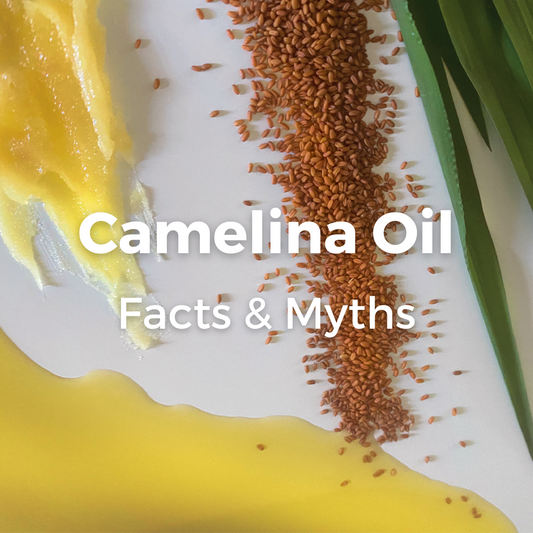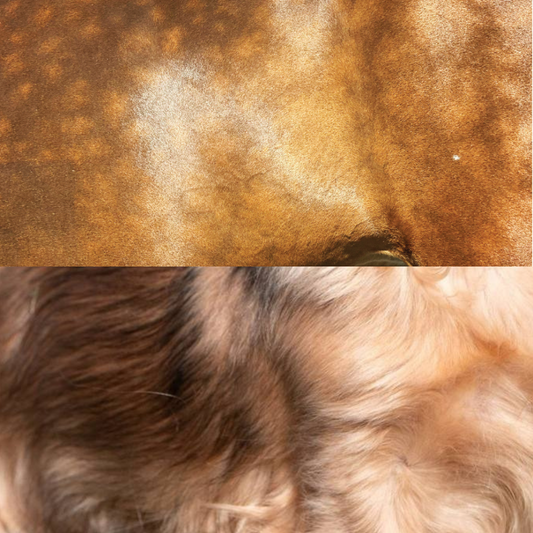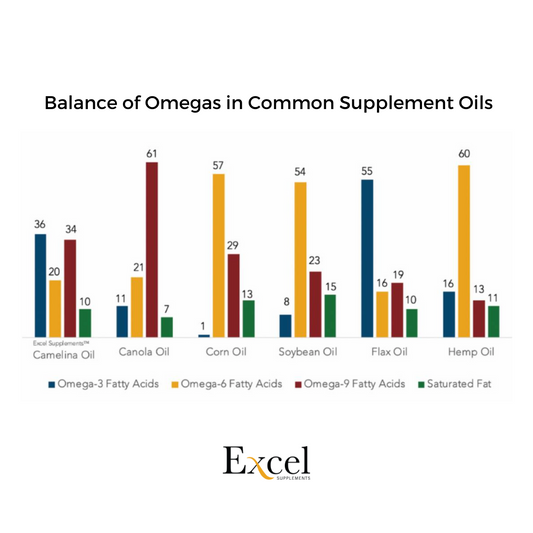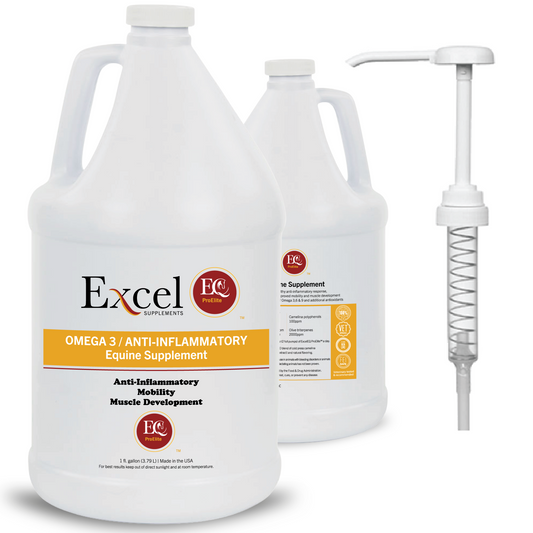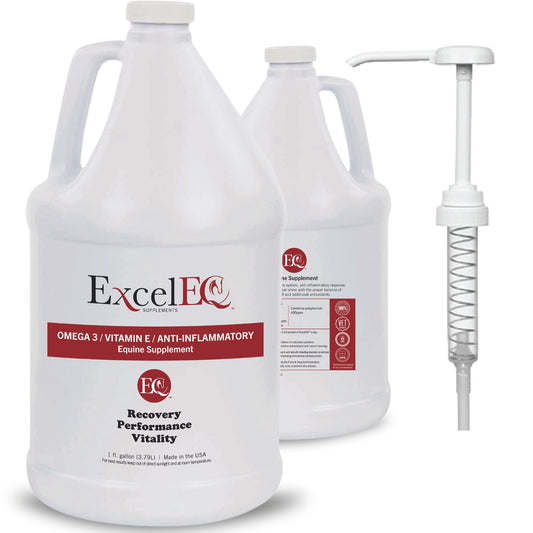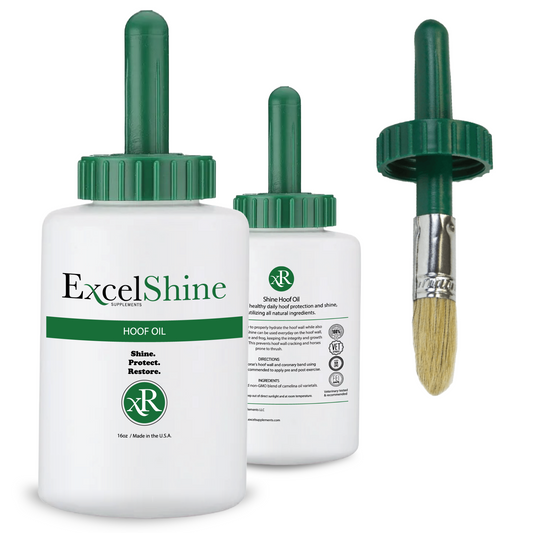Winter Hoof Care: Essential Tips for the Cold Months
Share
Winter is here, and so is the season for hay, hot cocoa, and winter hoof care! Drops in temperature can lead to icy conditions that affect hoof health. By prioritizing hoof care this winter, you can help your horse stay comfortable and healthy through the colder months.
Here are some key tips for winter hoof care:
Regular Hoof Inspections:
- Check your horse’s hooves regularly for cracks, chips, or signs of thrush, as colder, wetter conditions can exacerbate these issues.
- Laminitis can occur from trauma to the sole due to walking on rough, frozen ground.
Maintain Hoof Moisture Balance for Hoof Care During winter:

Use hoof conditioners or oils to help maintain moisture levels, preventing hooves from becoming brittle and prone to cracking.
-
ExcelShine
- Made with a non-GMO blend of cold-pressed Camelina seed oil, helps create a protective barrier against excess moisture and bacteria, which can lead to hoof deterioration. The antioxidants in ExcelShine, including omega-3 fatty acids, reduce inflammation and oxidative stress, promoting healthy hoof growth. It helps strengthen and firm the hoof wall, preventing chipping, cracks, and peeling. Easy to apply, ExcelShine provides daily protection to the coronet band, hoof wall, frog, and sole, ensuring your horse’s hooves stay resilient and healthy.
-
ExcelRescue Hoof Support
- A blend of non-GMO Camelina seed oil and Sonoran Desert beeswax, which condition the hooves, support healthy growth, and create a protective barrier against excess moisture, dirt, and bacteria. Additionally, the antioxidants and omega-3 fatty acids in ExcelRescue Hoof Support will help to reduce inflammation and oxidative stress, while antibacterial properties of Sonoran Beeswax support healing. Regular use of this product can significantly improve hoof health and prevent issues like cracks and thrush.
- Keep Hooves Clean: Regularly clean out your horse’s hooves to remove mud and debris, which can harbor bacteria and cause infections.
- Consider purchasing thrush treatments such as thrush buster to have on hand
Proper Trimming and Shoeing For Hoof Care During Winter: Ensure your farrier trims and shoes your horse appropriately for winter conditions.

-
Consider snow shoes - Shoes are more slippery in winter conditions
- Calks or Studs permanently added to the shoe for traction support - this method is not as commonly advised as it can mess with the horse's natural way of movement. With this method, prolonged periods of use can negatively affect joints, tendons and ligaments. Read more here.
-
Consider removing shoes if living outside
- Shod feet become more easily ice packed
-
If unable to remove shoes consider snow pads
- These help with build up of snow/ice and mildly support traction.
-
Consider glue-on’s
- Known to be more flexible they could assist your horse in maintaining balance over hard uneven ground.
Ice Prevention: Be mindful of ice buildup on your horse’s hooves.
This can cause discomfort, pain, and potential injury by creating pressure points on the sole of the hoof, making it difficult for the horse to walk properly, and putting extra strain on the tendons and joints in the leg. Use traction devices or hoof boots if necessary when riding in icy conditions.
Balance Diet and Supplementation: Horses require a balanced diet of carbohydrates, water, minerals, fats, vitamins, and protein.

- Good quality grass hay or alfalfa mix typically meets protein needs.
- Aim for a protein level of around 10%, adjusting based on your horse’s specific needs and workload.
- Supplements like ExcelEQ ProElite™ enhance nutrient bioavailability, ensuring your horse receives optimal nutrition throughout the winter months.
Regular Exercise:
Regular exercise helps support circulation promoting better blood flow to the hoof. Resulting in...
-
Optimized blood flow
- Proper growth and repair.
All of these steps are vital to ensure that come spring your horse's hoof is still in top condition. If hooves are not maintained throughout the winter and allowed to break off, it may be difficult to have the horse shod when spring comes.
Additional Resources:

